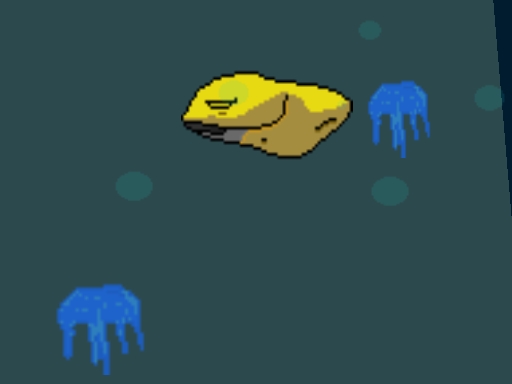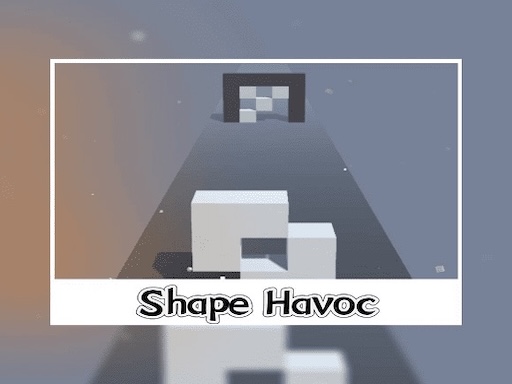Crossroads of Peril
About Crossroads of Peril
Dude, you *have* to hear about this game I just stumbled upon. Seriously, it’s called *Crossroads of Peril*, and it’s just… it’s something else. I know, the name sounds like some grimdark fantasy RPG, right? But it’s not. It’s this incredible adventure game that's built around the most mind-bending, satisfying environmental puzzles I’ve ever encountered. And when I say "puzzles," I don't mean like, sliding block puzzles on a screen. I mean the *entire world* is a puzzle, and you're this intrepid explorer trying to navigate it.
What I love about games like this is how they just grab you and don't let go. You know that feeling when you're so absorbed you forget what time it is, or even that you're holding a controller? That's *Crossroads of Peril* for me. From the moment I booted it up, I was just captivated. The art style, for starters, is gorgeous – it's got this rich, almost hand-painted feel, but with incredible detail that makes every ancient ruin, every overgrown jungle path, every shimmering crystal cavern feel alive and incredibly dangerous. You can almost feel the damp air in the forgotten crypts, or the heat shimmering off the desert sands.
The premise is deceptively simple: you're an explorer, let's call him Kael, on a quest to uncover the secrets of a lost civilization. But this isn't some hack-and-slash affair. Oh no. The true challenge, the real peril, lies in the very landscape itself. Every path forward is blocked by ancient mechanisms, cunning traps, or just sheer, impossible geometry. And that’s where the magic happens.
Think of it like this: imagine you’re deep inside a crumbling temple. Ahead, your path is completely blocked by massive, intricately carved stone blocks. There’s no way around, no secret passage. But then you notice it – a single, glowing rune on one of the blocks, mirrored by another on a nearby pedestal. The game doesn't tell you what to do, it just presents the problem. And that’s the core loop: you’re presented with an impassable obstacle, and your goal is to figure out how to manipulate the environment to create a clear path for Kael to pass through.
It's not about brute force; it’s about pure, unadulterated spatial reasoning and foresight. You find yourself looking at these seemingly static environments and thinking, "Okay, if I push *this* pillar, it'll slide into *that* alcove, which might then trigger *that* pressure plate, causing *that* ancient gate to slowly grind open." But it’s never that straightforward. What's fascinating is that moving one element often affects others, creating a domino effect that can either clear your path or, more often than not, block it even further. You’ll find yourself moving a colossal statue, only for it to expose a hidden laser grid that now perfectly bisects your intended route. And then you have to rethink, "Right, so if I move *that* one, I need to find a way to redirect the laser, which means manipulating *this* other set of ancient mirrors…"
There's something incredibly satisfying about that mental gymnastics. I mean, honestly, there have been moments where I’ve been stuck on a single "crossroad" for a good half hour, just pacing Kael back and forth, turning the camera, trying to visualize the solution in my head. My shoulders get tense, my brow furrows, and I can almost hear the gears grinding in my own brain as I try to piece it together. And then, *bam*. The solution clicks. It’s like a lightbulb going off, a sudden burst of clarity where the whole complex sequence just… makes sense. And then the rush of executing it! You start moving Kael, pushing the first block, timing his sprint through a newly opened gap, pulling a lever just as a platform slides into place, and watching as the entire intricate contraption you've envisioned unfolds perfectly. That feeling, that moment when a strategy finally clicks into place and you see your plan come to life, is pure gaming euphoria. It’s that visceral "click" of understanding, that perfect synergy of thought and action.
The brilliant thing about this is the sheer variety of these "perils." It’s not just sliding blocks. One moment you're in a forgotten clockwork city, manipulating giant gears and pendulums to open a path. The next, you're in a subterranean grotto, redirecting ancient water flows to raise and lower platforms, or navigating a treacherous swamp where every step needs to be timed to avoid the patrolling, stone-skinned guardians whose movement patterns are as much a puzzle as the environment itself. The game doesn't just throw random obstacles at you; each region, each "crossroad," introduces new mechanics, new environmental rules that you have to learn and master. It keeps things incredibly fresh. Just wait until you encounter the Sunken Archives, where the entire floor is a shifting mosaic, and you have to manipulate the tiles to create a stable path before they sink into the abyss. That one had me sweating, I'm not gonna lie.
And it's not just about getting from point A to point B. The world of *Crossroads of Peril* is brimming with secrets. Hidden alcoves, optional challenges that reward you with lore fragments or upgrades that might slightly alter Kael’s abilities (like a temporary boost to his movement speed, or the ability to briefly see a projected path). These aren't necessary to finish the game, but they add so much depth, encouraging you to really explore every nook and cranny, to push the boundaries of your understanding of the game's mechanics. In my experience, the best moments come when you stumble upon one of these optional puzzles, something even more fiendishly clever than the main path, and you solve it just for the sheer satisfaction of it.
The sound design, too, is phenomenal. Every creak of ancient stone, every distant drip of water, the subtle hum of forgotten machinery – it all adds to the atmosphere, drawing you deeper into this world. When you successfully activate a mechanism, there's this deeply resonant *thunk* or a satisfying whir that just makes you feel like you've accomplished something significant. And when you fail, when a block slides into the wrong place and your path is irrevocably blocked, there’s a subtle, almost mournful chime that just makes you sigh and hit that glorious "reset" button. Because yes, you can always reset a specific puzzle, which is a godsend when you've painted yourself into a corner.
What's interesting is how the game manages to be incredibly challenging without ever feeling unfair. Every solution is always there, laid out in the environment, just waiting for you to see it. It respects your intelligence. This makes me wonder, sometimes, if the developers just sat in a room for months, playing with physical models, trying to break their own puzzles. Because the ingenuity is just off the charts. It’s the kind of game that makes you feel genuinely smart when you figure something out.
I’ve always been drawn to games that prioritize clever design over flashy combat, and *Crossroads of Peril* absolutely nails it. It's that rare gem that combines the meditative quality of a puzzle game with the grand scale and sense of discovery of a true adventure. It’s not about quick reflexes, though timing does play a role in some of the more dynamic sections. It’s about patience, observation, and that beautiful moment of insight. It’s about feeling the tension in your shoulders as you try to visualize a complex sequence of moves, and then the incredible release when you nail it.
Honestly, if you're looking for something that will truly engage your brain, something that will make you feel like a master strategist and an intrepid explorer all at once, you absolutely have to check out *Crossroads of Peril*. It’s not just a game; it’s an experience. It’s that feeling of conquering the impossible, one perfectly placed step at a time. Trust me on this one. You'll thank me later.
What I love about games like this is how they just grab you and don't let go. You know that feeling when you're so absorbed you forget what time it is, or even that you're holding a controller? That's *Crossroads of Peril* for me. From the moment I booted it up, I was just captivated. The art style, for starters, is gorgeous – it's got this rich, almost hand-painted feel, but with incredible detail that makes every ancient ruin, every overgrown jungle path, every shimmering crystal cavern feel alive and incredibly dangerous. You can almost feel the damp air in the forgotten crypts, or the heat shimmering off the desert sands.
The premise is deceptively simple: you're an explorer, let's call him Kael, on a quest to uncover the secrets of a lost civilization. But this isn't some hack-and-slash affair. Oh no. The true challenge, the real peril, lies in the very landscape itself. Every path forward is blocked by ancient mechanisms, cunning traps, or just sheer, impossible geometry. And that’s where the magic happens.
Think of it like this: imagine you’re deep inside a crumbling temple. Ahead, your path is completely blocked by massive, intricately carved stone blocks. There’s no way around, no secret passage. But then you notice it – a single, glowing rune on one of the blocks, mirrored by another on a nearby pedestal. The game doesn't tell you what to do, it just presents the problem. And that’s the core loop: you’re presented with an impassable obstacle, and your goal is to figure out how to manipulate the environment to create a clear path for Kael to pass through.
It's not about brute force; it’s about pure, unadulterated spatial reasoning and foresight. You find yourself looking at these seemingly static environments and thinking, "Okay, if I push *this* pillar, it'll slide into *that* alcove, which might then trigger *that* pressure plate, causing *that* ancient gate to slowly grind open." But it’s never that straightforward. What's fascinating is that moving one element often affects others, creating a domino effect that can either clear your path or, more often than not, block it even further. You’ll find yourself moving a colossal statue, only for it to expose a hidden laser grid that now perfectly bisects your intended route. And then you have to rethink, "Right, so if I move *that* one, I need to find a way to redirect the laser, which means manipulating *this* other set of ancient mirrors…"
There's something incredibly satisfying about that mental gymnastics. I mean, honestly, there have been moments where I’ve been stuck on a single "crossroad" for a good half hour, just pacing Kael back and forth, turning the camera, trying to visualize the solution in my head. My shoulders get tense, my brow furrows, and I can almost hear the gears grinding in my own brain as I try to piece it together. And then, *bam*. The solution clicks. It’s like a lightbulb going off, a sudden burst of clarity where the whole complex sequence just… makes sense. And then the rush of executing it! You start moving Kael, pushing the first block, timing his sprint through a newly opened gap, pulling a lever just as a platform slides into place, and watching as the entire intricate contraption you've envisioned unfolds perfectly. That feeling, that moment when a strategy finally clicks into place and you see your plan come to life, is pure gaming euphoria. It’s that visceral "click" of understanding, that perfect synergy of thought and action.
The brilliant thing about this is the sheer variety of these "perils." It’s not just sliding blocks. One moment you're in a forgotten clockwork city, manipulating giant gears and pendulums to open a path. The next, you're in a subterranean grotto, redirecting ancient water flows to raise and lower platforms, or navigating a treacherous swamp where every step needs to be timed to avoid the patrolling, stone-skinned guardians whose movement patterns are as much a puzzle as the environment itself. The game doesn't just throw random obstacles at you; each region, each "crossroad," introduces new mechanics, new environmental rules that you have to learn and master. It keeps things incredibly fresh. Just wait until you encounter the Sunken Archives, where the entire floor is a shifting mosaic, and you have to manipulate the tiles to create a stable path before they sink into the abyss. That one had me sweating, I'm not gonna lie.
And it's not just about getting from point A to point B. The world of *Crossroads of Peril* is brimming with secrets. Hidden alcoves, optional challenges that reward you with lore fragments or upgrades that might slightly alter Kael’s abilities (like a temporary boost to his movement speed, or the ability to briefly see a projected path). These aren't necessary to finish the game, but they add so much depth, encouraging you to really explore every nook and cranny, to push the boundaries of your understanding of the game's mechanics. In my experience, the best moments come when you stumble upon one of these optional puzzles, something even more fiendishly clever than the main path, and you solve it just for the sheer satisfaction of it.
The sound design, too, is phenomenal. Every creak of ancient stone, every distant drip of water, the subtle hum of forgotten machinery – it all adds to the atmosphere, drawing you deeper into this world. When you successfully activate a mechanism, there's this deeply resonant *thunk* or a satisfying whir that just makes you feel like you've accomplished something significant. And when you fail, when a block slides into the wrong place and your path is irrevocably blocked, there’s a subtle, almost mournful chime that just makes you sigh and hit that glorious "reset" button. Because yes, you can always reset a specific puzzle, which is a godsend when you've painted yourself into a corner.
What's interesting is how the game manages to be incredibly challenging without ever feeling unfair. Every solution is always there, laid out in the environment, just waiting for you to see it. It respects your intelligence. This makes me wonder, sometimes, if the developers just sat in a room for months, playing with physical models, trying to break their own puzzles. Because the ingenuity is just off the charts. It’s the kind of game that makes you feel genuinely smart when you figure something out.
I’ve always been drawn to games that prioritize clever design over flashy combat, and *Crossroads of Peril* absolutely nails it. It's that rare gem that combines the meditative quality of a puzzle game with the grand scale and sense of discovery of a true adventure. It’s not about quick reflexes, though timing does play a role in some of the more dynamic sections. It’s about patience, observation, and that beautiful moment of insight. It’s about feeling the tension in your shoulders as you try to visualize a complex sequence of moves, and then the incredible release when you nail it.
Honestly, if you're looking for something that will truly engage your brain, something that will make you feel like a master strategist and an intrepid explorer all at once, you absolutely have to check out *Crossroads of Peril*. It’s not just a game; it’s an experience. It’s that feeling of conquering the impossible, one perfectly placed step at a time. Trust me on this one. You'll thank me later.
Enjoy playing Crossroads of Peril online for free on 2mca Games. This Adventure game offers amazing gameplay and stunning graphics. No downloads required, play directly in your browser!
How to Play
Tap on screen





Comments
This game is awesome! I love the graphics and gameplay.
One of the best games I've played recently. Highly recommended!